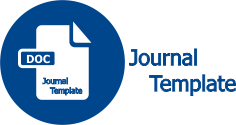Pengembangan Media RatuChemWeb dalam Model Pembelajaran Flipped Classroom untuk Meningkatkan Motivasi dan Hasil Belajar Peserta Didik
(1) Universitas Negeri Makassar
(2) Universitas Negeri Makassar
(3) Universitas Negeri Makassar
(*) Corresponding Author
DOI: https://doi.org/10.26858/cer.v5i1.26356
Abstract
Full Text:
PDFReferences
Adriani, Nina., & Ardi, Widhia, Sabekti. (2018). Tingkat Validitas Media Pembelajaran Kimia Berbasis Android. Jurnal Zarah, 6(2), 76-80.
Febliza, A & Oktariani. (2020). The Development of Online Learning Media by Using Moodle for General Chemistry Subject. Journal of Educational Science and Technology, 6(1).
Hamalik, O. (2003). Kurikulum dan Pembelajaran. Jakarta: PT. Bumi Aksara.
Hobri, (2009). Metodologi Penelitian Pengembangan (Aplikasi pada Penelitian Pendidikan Matematika). Jember: Pena Salsabila.
Irmayanti, S & Nugroho, M. A. (2016). Pengembangan Media Pembelajaran Akuntansi Berbasis Web Blog untuk Meningkatkan Motivasi Belajar. Jurnal Pendidikan Akuntansi Indonesia, 15(1).
Rindaningsih, I. (2018). Efektifitas Model Flipped Classroom dalam Mata Kuliah Perencanaan Pembelajaran Prodi S1 PGMI UMSIDA. Proceedings of the ICECRS, 1(2), 3.
Rusman. (2012). Belajar dan pembelajaran berbasis komputer mengembangkan profesionalisme abad 21. Bandung: Alfabeta.
Kay, R. (2011). Examining the Effectiveness of Web-Based Learning Tools in Middle and Secondary School Science Classrooms. Journal of E-Learning and Learning Objects, 7.
Mardikaningtyas, D.A, dkk. (2016). Pengembangan Pembelajaran Pencemaran Lingkungan Berbasis Penelitian Fitoremediasi untuk Menunjang Keterampilan Ilmiah, Sikap Peduli Lingkungan dan Motivasi Mahasiswa pada Matakuliah Dasar-Dasar Ilmu Lingkungan. Jurnal Pendidikan: Teori, Penelitian dan Pengembangan, 1(3), 499-506.
McKnight dalam Ubaidillah, M. (2019). Penerapan Flipped Classroom Berbasis Teknologi Informasi pada Mata Pelajaran Fiqih di MTs Al-Chusnaniyah Surabaya. Jurnal Islamika: Jurnal Ilmu-Ilmu Keislaman, 19(1), 34-45.
Nabuasa, A.N, Supardi, K.I & Sumarti, S.S. (2020). Development of the Website based Chemistry Learning Integrated Evaluation to Measure Students Learning Interest in Colloids Material. Journal of Innovative Science Education, 9(1).
Pratama. (2020). Pengembangan Media Pembelajaran Berbasis Web pada Materi Pengujian Kimia Mutu Bahan Di SMK PPN Tanjungsari. Skripsi: Universitas Pendidikan Indonesia.
Rusman., Kurniawan, D., & Riyana, C. (2012). Pembelajaran Berbasis Teknologi Informasi dan Komunikasi. Jakarta: Rajawali Pers.
Sakat, A.A, Mohd Zin, M. Z., Muhamad, R., Ahmad, A, Ahmad, N. A, & Kamo, M. A. (2012). Educational technology media method in teaching and learning progress. American Journal of Applied Sciences, 9(6), 874-888.
Saputra, H.D, Nasrun, N, & Wakhinuddin, W. (2018). Development of Web-Based Learning Media in Vocational Secondary School. Jurnal Ilmiah Pendidikan Teknik Elektro, 3(1).
Susanti, V.D, Andari, T & Harenza, A.F. (2020). Web-Based Learning Media Assisted by Powtoon in Basic Mathematics Course. Jurnal Pendidikan Matematika, 11(1).
Uno, H.B. (2008). Teori Motivasi dan Pengukurannya. Jakarta: Bumi Aksara.
Widiyaningtyas, T., & Widiatmoko, W. (2014). Media Pembelajaran Berbasis Web pada Mata Pelajaran Kimia. Jurnal Tekno, 21 (1).
Article Metrics
Abstract view : 171 times | PDF view : 23 timesRefbacks
- There are currently no refbacks.
Jurnal dipublikasikan oleh: Program Studi Pendidikan Kimia
Program Pascasarjana Universitas Negeri Makassar
Alamat JL. Bonto Langkasa Gunung Sari Makassar, 90222
Kampus PPs UNM Makassar Gedung AD ruang 406 Lt 4, Indonesia.Phone 082393643737/085145825311/085242228678
CER UNM Indexed by:

Chemistry Education Review (CER) is licensed under a Creative Commons Attribution-NonCommercial 4.0 International License.










